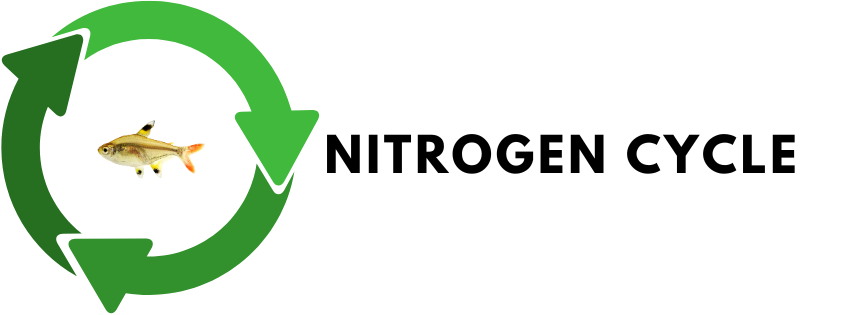The Nitrogen Cycle in an Aquarium
The Nitrogen Cycle: A Vital Process in Aquariums
The nitrogen cycle is a crucial biological process that occurs in all aquatic environments, including aquariums. It’s a series of steps involving different types of bacteria that convert harmful nitrogen compounds into less toxic forms. Understanding this cycle is essential for maintaining a healthy aquarium ecosystem. In this article we will explore the basics of the nitrogen cycle in a freshwater aquarium.
The Nitrogen Cycle Process
The cycle begins with the production of ammonia (NH3). This toxic compound is released into the water primarily by the waste products of fish, invertebrates, and decaying plant matter. Ammonia is highly harmful to aquatic life, even in small concentrations.
Beneficial bacteria, specifically nitrifying bacteria, play a vital role in converting ammonia into less harmful forms. These bacteria live on surfaces within the aquarium, such as the substrate, plants, and filter media. There are two main types of nitrifying bacteria:
- Nitrosomonas: These bacteria convert ammonia into nitrite (NO2). Nitrite is also toxic to aquatic life, but to a lesser extent than ammonia.
- Nitrobacter: Nitrobacter bacteria then convert nitrite into nitrate (NO3). Nitrate is less toxic than ammonia and nitrite, but it can still accumulate to harmful levels if not managed properly.
Why is the Nitrogen Cycle Important?
The nitrogen cycle is essential for maintaining a healthy aquarium environment for several reasons:
- Toxic waste removal: By converting harmful ammonia and nitrite into less toxic nitrate, the nitrogen cycle helps to remove toxic substances from the water, preventing harm to aquatic life.
- Nutrient cycling: Nitrate, while less toxic than ammonia and nitrite, is still a nutrient that can be utilized by plants. This helps to maintain a balanced ecosystem within the aquarium.
- Stable environment: A well-functioning nitrogen cycle contributes to a stable and healthy environment for aquarium inhabitants.
Where Does Ammonia Come From?
As mentioned earlier, ammonia is primarily produced by the waste products of fish, invertebrates, and decaying plant matter. Fish excrete ammonia through their gills, while invertebrates and decaying matter release it into the water as they decompose. Additionally, uneaten food can also contribute to ammonia levels. Some aquarium substrates, such as aquarium soil, can release ammonia into the water in the early stages.
Cycling an Aquarium
Cycling an aquarium from scratch involves establishing a healthy nitrogen cycle. This process can take several weeks, depending on factors such as the size of the aquarium, levels and consistency of ammonia, and the quality of the filter media. During the cycling process, it’s important to monitor ammonia, nitrite, and nitrate levels to ensure they are decreasing as the beneficial bacteria population grows. We recommend investing in a reliable test kit to keep track of levels. It can be fun and educational to keep a note of these levels as the cycle progresses. This knowledge is vital as you progress as an aquarist.
Maintaining Beneficial Bacteria
To maintain a healthy population of beneficial bacteria, it’s crucial to avoid disturbing their habitat. This means:
- Gentle cleaning: When cleaning the filter, avoid using any chemicals or excessive scrubbing, as this can disrupt the biofilm where the bacteria live.
- Regular maintenance: Regularly clean the filter media to remove debris and prevent clogging, but avoid replacing all the media at once, as this can disrupt the bacteria population.
- Avoid tap water: Tap water often contains chlorine and chloramine, which can kill beneficial bacteria. Use water taken from the aquarium to clean sponges and other medias.
By understanding the nitrogen cycle and taking steps to maintain a healthy bacterial population, you can create a thriving and sustainable aquarium environment for your aquatic pets.



